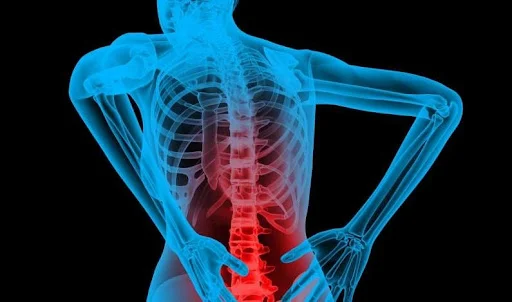Understanding Back Pain: Causes, Prevention, and Treatment Options
Back pain is one of the most common health issues affecting people worldwide. Whether it’s a dull ache in the lower back after a long day at work or a sharp, sudden pain that limits movement, back pain can significantly impact your quality of life. According to the World Health Organization, approximately 619 million people experienced low back pain globally in 2020—a number expected to rise.
In this blog, we’ll explore the causes of back pain, tips for prevention, and the latest treatment options to help you stay pain-free and active.
Common Causes of Back Pain
Back pain can originate from various factors, including lifestyle choices, injuries, or underlying medical conditions. Here are some of the most common causes:
-
Poor Posture: Sitting or standing incorrectly for long periods places stress on the spine and surrounding muscles.
-
Muscle or Ligament Strain: Lifting heavy objects or sudden awkward movements can strain back muscles.
-
Herniated or Bulging Discs: Discs act as cushions between vertebrae, and damage to them can cause nerve pain.
-
Arthritis: Osteoarthritis can affect the lower back, leading to stiffness and discomfort.
-
Scoliosis or Spinal Irregularities: Abnormal curvature of the spine can contribute to chronic back pain.
Risk Factors
-
Age: Back pain becomes more common as you age, especially after 30 or 40.
-
Sedentary Lifestyle: Lack of regular exercise weakens the muscles, contributing to spinal problems.
-
Obesity: Extra weight places additional strain on the spine.
-
Occupational Hazards: Jobs involving heavy lifting or prolonged sitting can increase the risk.
-
Smoking: Smoking reduces blood flow to the spine, hindering its ability to heal.
Prevention Tips
Preventing back pain often involves small lifestyle changes and building healthy habits:
-
Exercise Regularly: Focus on strength training for your core muscles, which support your spine.
-
Maintain Good Posture: Be mindful of your posture while sitting, standing, and using electronic devices.
-
Lift Properly: Always lift from your knees, not your back, and avoid twisting while lifting.
-
Use Ergonomic Furniture: Invest in a chair and desk setup that promotes proper spinal alignment.
-
Stay Active: Avoid sitting for long stretches. Take breaks to move and stretch during the day.
Treatment Options
For those already dealing with back pain, several treatment avenues may offer relief:
-
Physical Therapy: Tailored exercises can improve mobility and strengthen muscles.
-
Medication: Over-the-counter pain relievers like ibuprofen or acetaminophen can reduce inflammation and discomfort.
-
Chiropractic Care: Manual adjustments can help realign the spine and alleviate pain.
-
Injections: Cortisone injections may be used to reduce inflammation around the nerves.
-
Surgical Intervention: In severe cases, such as spinal stenosis or herniated discs, surgery may be necessary.
-
Alternative Therapies: Acupuncture, yoga, and massage therapy can complement traditional treatment plans.
When to See a Doctor
Back pain usually resolves on its own, but you should consult a healthcare professional if you experience:
-
Pain that lasts longer than a few weeks
-
Severe pain that doesn’t improve with rest
-
Numbness or tingling in your legs
-
Difficulty walking or standing
-
Loss of bladder or bowel control
Final Thoughts
Back pain is a common yet manageable condition. By understanding its causes and taking proactive steps to maintain spinal health, you can reduce your risk and enjoy a more active, pain-free life. If you're currently experiencing persistent or severe back pain, don’t wait—seek professional advice to get back on the road to recovery.

Comments
Post a Comment